Setting up Google Drive Backup & Sync
Before using as a backup solution, please read the warning note at the bottom of the page.
If already have Backup & Sync installed but need to get to its setting, see below.
Setting up Google Drive Backup & Sync
1. Once you've chosen to download Backup & Sync (found here), go to your Downloads and double click on the file to begin installation.

2. Once it opens, you will sign in with your NMU email account
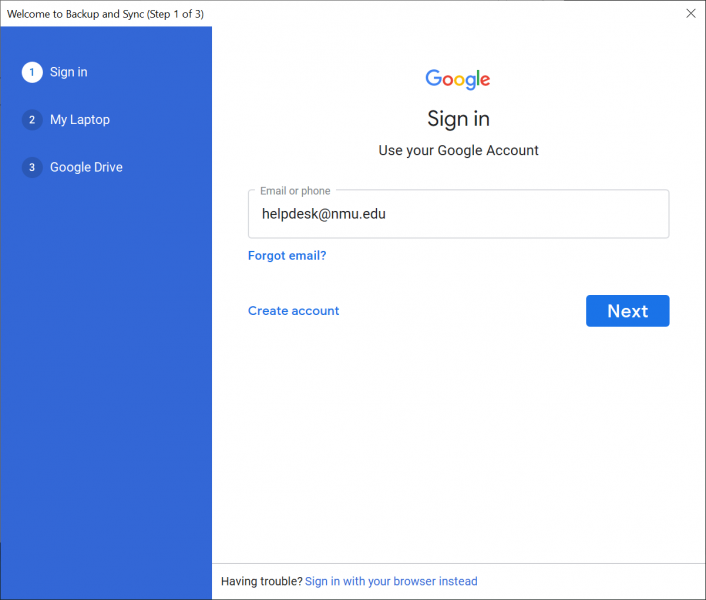
3. After you hit the Next button, you will fill in your password and select Next again. If you have 2fa setup on your Google account, you will most likely get a prompt to allow this. (The following image will vary based on what, if any, 2fa option you setup.)
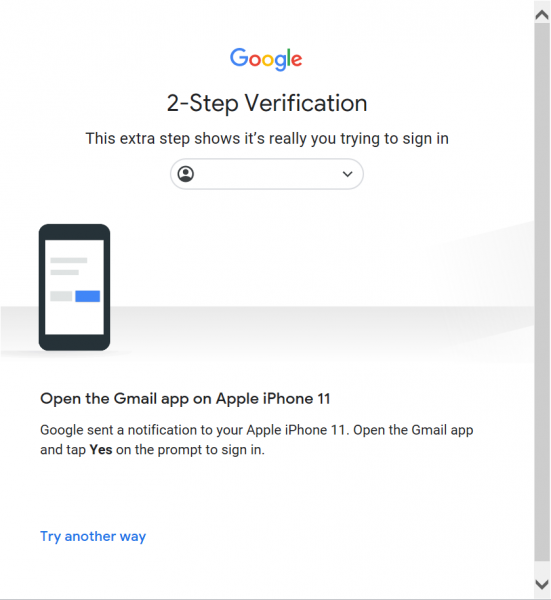
4. After this you will begin the setup. You will be given the choice to choose which folders on your computer you would like to have synced/backed up to your Google Drive.

5. Here you can accept the default folders chosen, deselect any of the default ones, and also choose to add other folders on your PC that you'd like to backup to Drive.
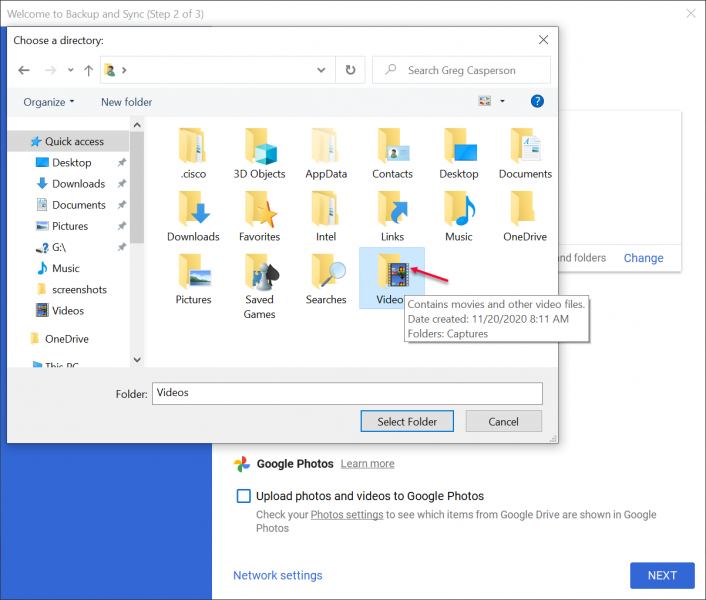
6. In this case I chose to add the videos folder but you can choose any folder. If have Desktop already checked in Defaults, any folder in the Desktop will already be included. Shortcuts to folders will not sync the actual folder so you would have to find and select that manually. (Note, if have several/large videos or photos, syncing will take longer)
7. Here you can see the video folder is added to the list.
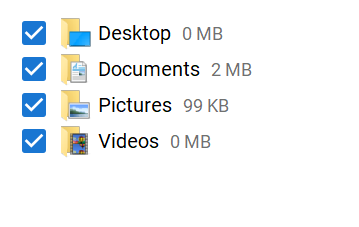
You can decide to uncheck it later from Backup's preferences or add other folders.
8. Once done adding folders, select Next, and you will begin selecting folders on your Google Drive that you would like to have on your PC as well.
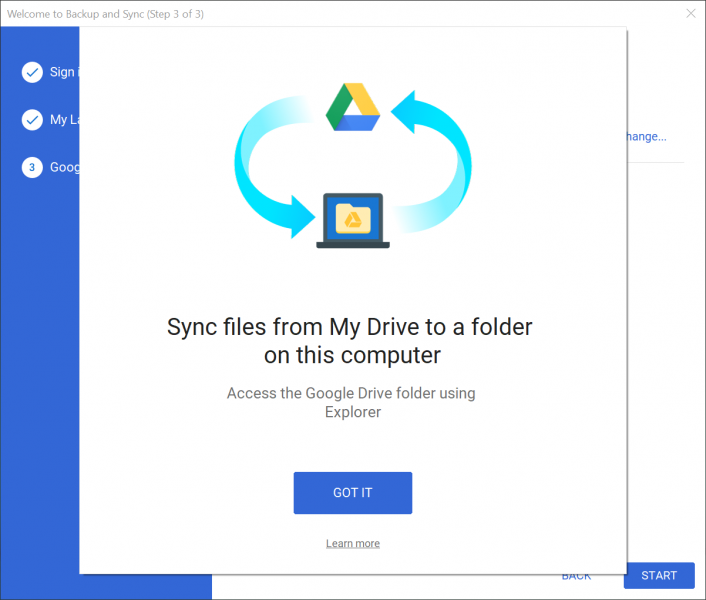
9. Click Got It! Here you can choose which of the folders you'd like to work with directly on your PC. If you have a large folder on your drive but not a lot of room on your PC's hard drive, you can unselect the folder and then only work with the files from Google Drive directly.
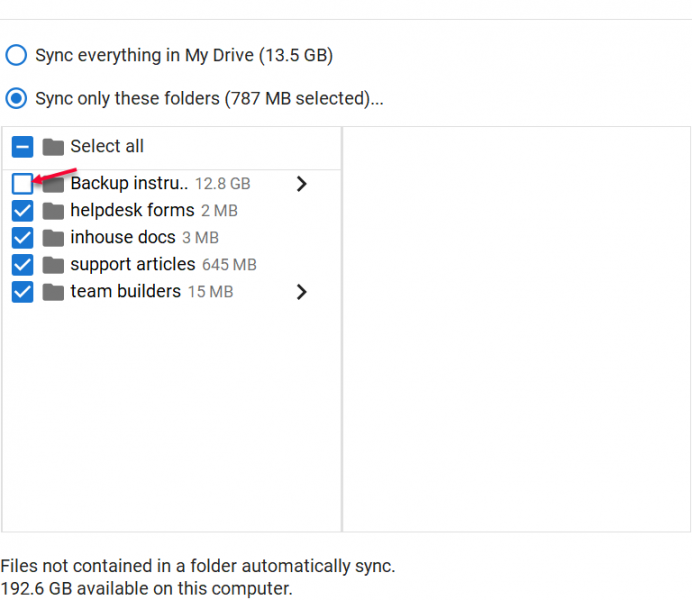
In this case, I deselected the Backup instructions folder to save room on my hard drive and because I will only access these files occasionally.
10. Once you've selected your folders, continue finishing the setup by clicking Start. Backup & Sync will begin the syncing process.
11. Once done, you may notice a popup to open your Drive. You can click on this and then see how your Google Drive is now setup.
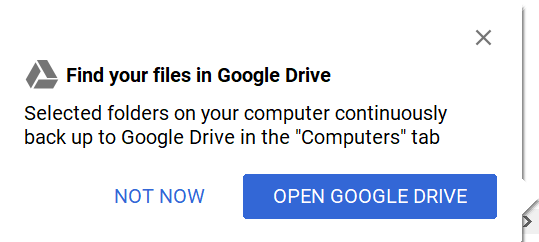
12. You will notice that there is a new section in your Drive called Computers, located below My Drive and Shared Drives. Click on this and you can see your laptop or desktop. Click on that and you will see the folders from your PC that are now synced up onto your Drive.
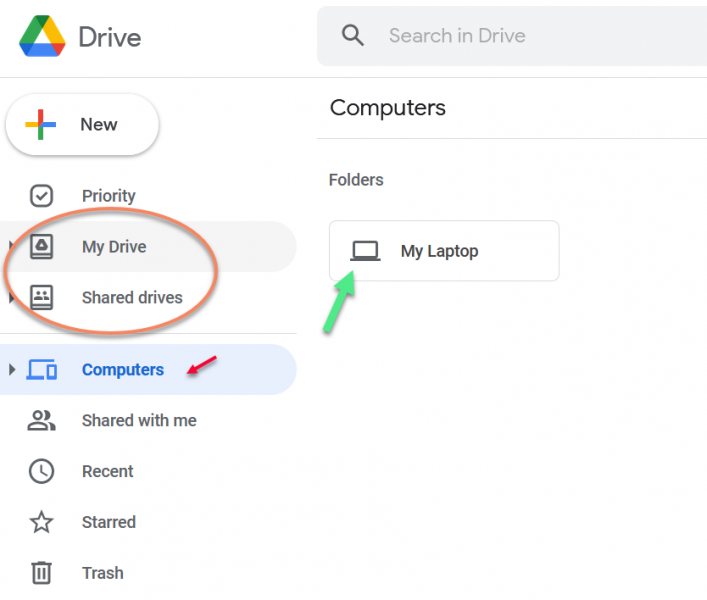
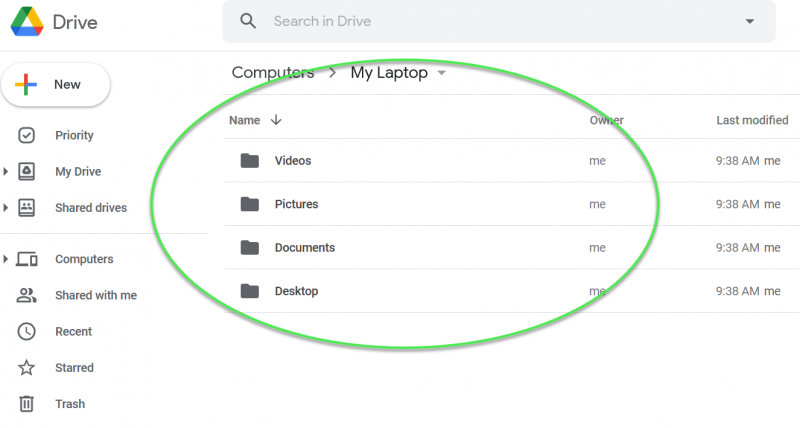
13. If you want to see the files from Google Drive that are now on your PC, there should be a Google Drive shortcut or you can open the File Explorer and should have a Google Drive added to your Quick Access menu.
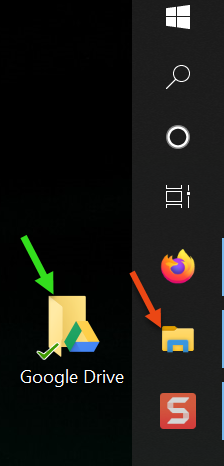 or
or 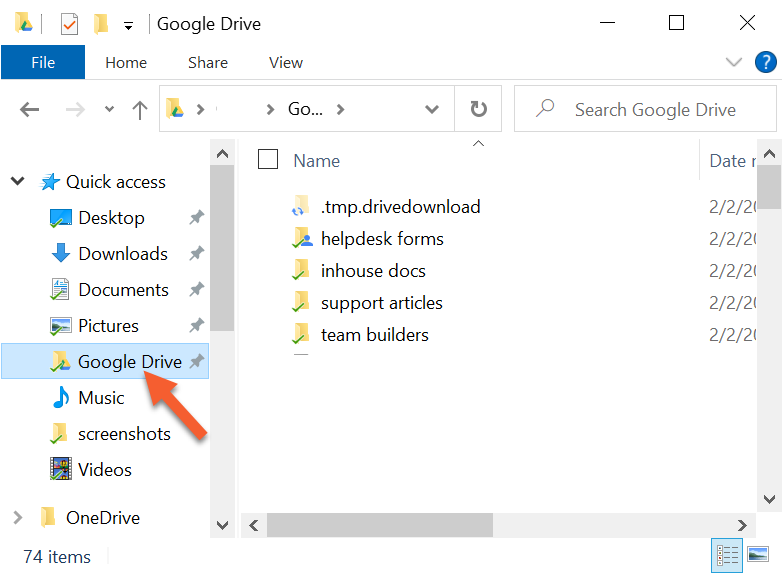
At this point, setup is complete but files may need a while to completely sync.
Settings
You can go back and adjust Backup & Sync's setting from the Drive icon in your system tray or in the task bar.
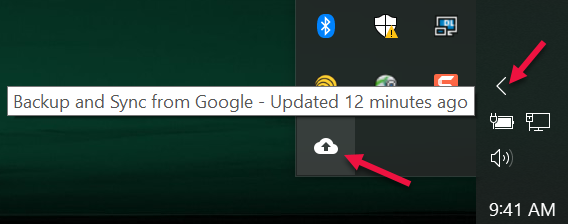
1. When you right click on the icon, you'll see 4 icons, from left to right, Open Google Drive (folder on your PC), Visit Google Drive (website), Google Photos, and Settings. Click on Settings and choose Preferences.

2. Here you'll be able to change settings for sync settings from your Laptop(computer) up to Google Drive, syncing from your Google Drive to your computer, and finally some general account settings (you shouldn't need to alter these).
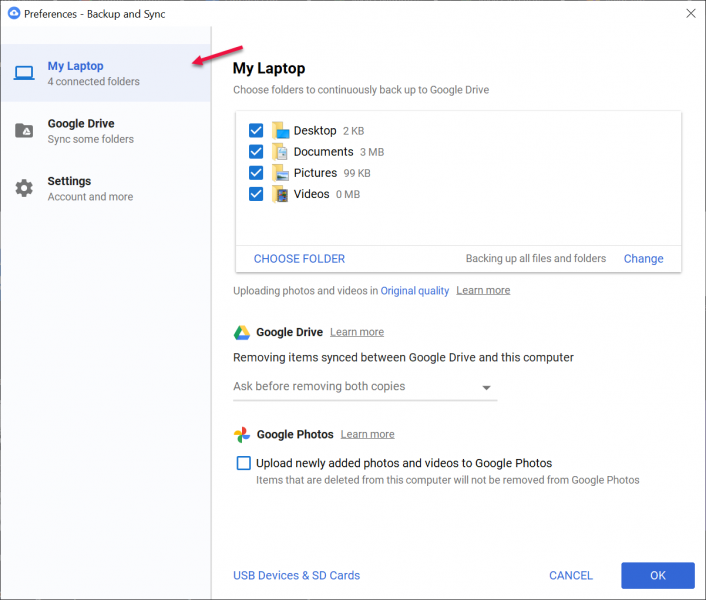
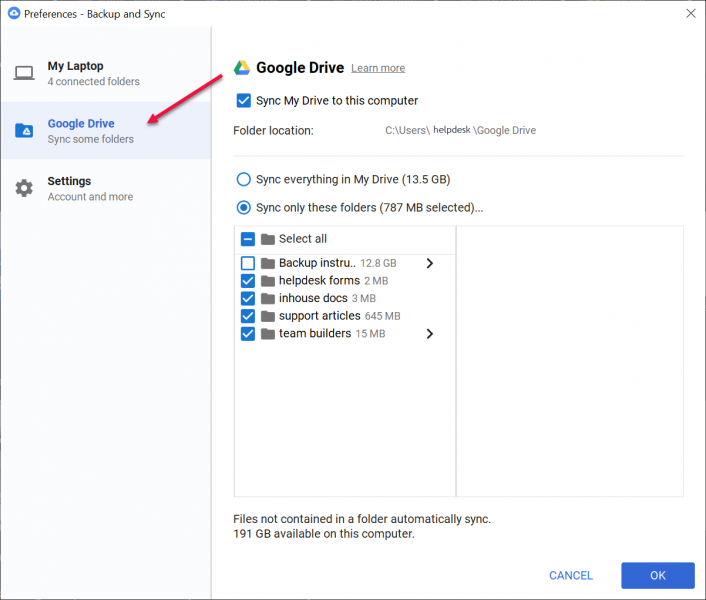
Notes on using as a backup solution
Having a copy of your files synced on both your computer and Google Drive, will allow you to recover or use your files from another computer/device in case you no longer have access to the original computer due to damage or loss. This also works well when re-imaging your computer or switching to a new one. However, it does not provide a backup in the case you accidentally erase a file and the drive has synced (it will be deleted on Google's cloud drive as well). Similarly if the file gets corrupted, it most likely will be corrupted in the synced version. And finally if your files are encrypted due to ransomware on your computer, the encrypted files will most likely get synced up to the Google drive as well if your pc has an internet connection during/after the ransomware attack. We recommend you also use a backup drive with its provided backup software or a third-party backup solution since those backups are usually meant to cover any of the above issues.
